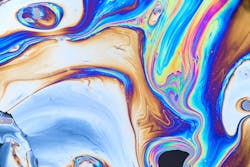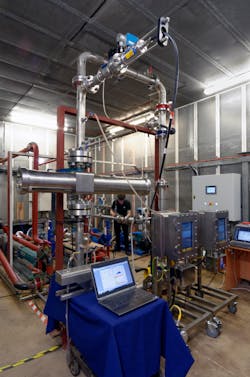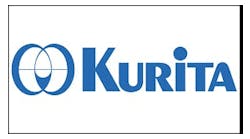Oil is one of the most common types of water pollution. Even in small quantities, it can spread on the water surface and potentially cause harm to the aquatic environment. Oil is also a risk to the treatment of drinking water; a tiny amount of oil can have a disproportionate impact by tainting the water, even at an extremely low concentration. In addition, for sewage treatment works, the presence of oil in industrial effluent can impact the treatment process.
For the oil and gas industry, a significant amount of water (called produced water) is co-produced during oil and gas production. Every barrel of oil produced worldwide co-produces 4–5 barrels of water, which is then treated and either discharged, reinjected or reused.
For offshore production, approximately 75% of this water is discharged, with the rest being reinjected into a reservoir. For onshore production roughly 90% of this water is reinjected either for disposal or for reservoir pressure maintenance with the rest being treated and then reused or discharged. Regardless of whether produced water is to be discharged onshore or offshore, the oil content in the discharged produced water must meet a discharge standard set by regulators around the world.
Oil-in-water (OiW) measurement is a specialized subject, relevant to water and wastewater treatment. However, unlike many other parameters, OiW is a method-defined parameter. Without a method specified, figures of OiW concentration can be misleading to say the least.
What is OiW?
Essentially a general term for petroleum-based compounds in water, (OiW) is also referred to as total oil and grease (TOG). Petroleum-based compounds can be divided into two main groups: pure hydrocarbons and heteroatom compounds. Pure hydrocarbons are those compounds that, at a molecular level, consist of only hydrogen (H) and carbon (C) atoms and are non-polar in nature. Heteroatom compounds contain not only carbon and hydrogen atoms but also heteroatoms such as sulfur, nitrogen and/or oxygen and are polar.
When a water sample is brought into a lab for OiW measurement, usually solvent extraction is the first step in the analysis. If the OiW measurement is then performed on the extract directly, then what is measured is often referred to as TOG. However, if the extract is treated using a silica gel or Florisil (i.e., by passing the extract through the silica gel or Florisil) and the OiW measurement is conducted on the filtrate, then what is measured is often referred to as the total petroleum hydrocarbon (TPH). Silica gel or Florisil would have filtered out all the polar compounds such as carboxylic acids, phenols and other heteroatom compounds.
Measurement Methods
There are many different OiW measurement methods available, which fall into two groups: reference methods and non-reference methods. Within the reference methods group, there are three main types: infrared absorption, e.g., SM 5520 C; gas chromatography and flame ionization detection (GC-FID), e.g., ISO 9377-2; and gravimetric, e.g., the EPA Method 1664. Under the non-reference methods group, there are two sub-groups: bench-top methods and online/inline analyzers. Popular bench-top methods include solvent extraction and infrared as well as solvent extraction and UV fluorescence. In recent years, there are also solventless methods being developed. For online OiW measurement, the main techniques include ultraviolet (UV) fluorescence, laser-induced fluorescence (LIF), light scattering, microscopy image analysis and ultrasonic acoustic.
Reference methods are important in defining what OiW is and for regulatory compliance monitoring purposes. However, reference methods are not always user-friendly and may even be impractical for certain applications. Non-reference methods are often needed for a variety of reasons, including their ease of use, rapid results, low cost, portability and potential lack of requirement for solvents and other consumables. In the case of online analyzers, they can provide minute-by-minute (if not second-by-second) data, which is useful for operations such as process control and optimization.
Causes of Inaccurate Measurements
When discussing causes of inaccurate OiW measurements, there are three aspects that one may think of. The first is the oily water sample itself. If the oily water sample collected is not representative of the process stream, then no matter how good the measurement method is, the result obtained will not be accurate. OiW is a heterogeneous mixture, therefore taking a representative sample from a process stream is not as straightforward as with a homogeneous solution. Sample preservation, e.g., acidification, is also important as oil present in the water sample can degrade and precipitation can occur following sample contact with air. Fortunately, good practice guidance is available and should be followed to ensure the quality of OiW measurement.
The second aspect is related to the measurement methods. Each measurement will involve a certain number of measurement steps, each introducing a measurement uncertainty into a measurement result. Fortunately for a reference method, repeatability and reproducibility information is often available from inter-laboratory exercises previously carried out as part of the method development process. For a non-reference method, however, verified repeatability and reproducibility information is usually not readily available.
The third aspect is related to the fact that OiW is method defined. Therefore, if two OiW results are obtained by two different methods, then they will be different. In many ways, the two results may not be comparable. Thus, perception of “errors” can arise simply because of the difference in using various measurement methods, which have different OiW definitions.
Implications
Inaccurate measurement of OiW can impact on regulatory compliance monitoring, plant process and process optimization operations, and on making an assessment on a non-reference method. Inaccurate measurement will usually mean large measurement uncertainty, which is not suitable for compliance monitoring and/or process plant operations. Also, a non-reference method is often compared to a reference method by calculating the difference of OiW results obtained by the two. With the large uncertainty often associated with a reference method, such a comparison can mislead and provide a wrong assessment on the performance of a non-reference method.
Solutions and Way forward
In an ideal world, a universally agreed OiW definition would exist and a harmonized measurement method with a low measurement uncertainty would be agreed upon. Unfortunately, OiW will continue to be defined and measured using different methods around the world. To reduce OiW measurement errors and uncertainties, good practice guidelines such as the UK BEIS’ “Methodology for the Sampling and Analysis of Produced Water and Other Hydrocarbon Discharge” should be followed. Also, field measurement methods such as online OiW analyzers should be used for both process optimization and regulatory compliance monitoring purposes as they can provide not only continuous OiW information but also potentially more accurate overall OiW data.
Summary
All measurements will have errors and uncertainties and OiW measurement is no exception. In fact, due to the heterogeneous nature of the samples and the measurement being a method-defined parameter, OiW measurements are often associated with large errors and uncertainties that can have an impact on OiW regulatory compliance monitoring, plant operations and the assessment of non-reference measurement methods. To reduce the errors and uncertainties associated with OiW measurements, it is crucial to follow good practice guidance. There is also a need to encourage the use of non-reference methods such as online OiW analyzers, which could potentially offer more accurate overall OiW data and information. WT
About the Author: Dr Ming Yang is a principal consultant at TÜV SÜD National Engineering Laboratory, a provider of technical consultancy, research, testing and program management services. Part of the TÜV SÜD Group, it is also a global center of excellence for flow measurement and fluid flow systems and is the UK’s National Measurement Institute for Flow Measurement.



